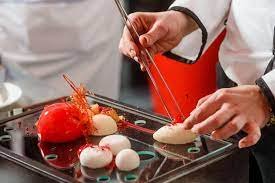Molecular gastronomy, a term that sounds more at home in a laboratory than a kitchen, represents a fascinating fusion of science and culinary art. This culinary movement transforms cooking into an experimental science, challenging traditional perceptions of flavors, textures, and presentation. It’s where chefs become scientists, employing techniques and tools from the lab to create dishes that surprise, delight, and sometimes bewilder diners.
The Origins of Molecular Gastronomy
The term „molecular gastronomy“ was coined in the late 20th century, but the concept of applying scientific principles to cooking dates back much further. It gained prominence in the culinary world thanks to chefs like Ferran Adrià, Heston Blumenthal, and Grant Achatz, who pushed the boundaries of traditional cooking. These pioneers used their kitchens as laboratories, experimenting with the physical and chemical transformations of ingredients.
The Science Behind the Art
At its core, molecular gastronomy explores the mechanisms behind cooking processes and flavor combinations. This discipline focuses on the chemical reactions that occur when foods are cooked, and how varying these reactions can alter the taste, texture, and appearance of dishes. Techniques such as spherification, emulsification, and the use of liquid nitrogen are common, allowing chefs to create caviar made from fruit juice, foams from meats or vegetables, and instant ice cream with a creamy, smooth texture.
Tools of the Trade
Molecular gastronomy often requires specialized equipment that wouldn’t look out of place in a scientific research lab. Centrifuges, sous vide machines, precision scales, and syringes are just a few tools molecular chefs use to achieve their culinary creations. These tools help chefs to precisely control cooking temperatures, create new textures, and deconstruct ingredients into their molecular components.
Impact on Dining Experience
Molecular gastronomy has revolutionized the dining experience, turning meals into multi-sensory events. Dishes are designed not only to taste exquisite but also to engage sight, smell, and even sound. This approach to cooking aims to evoke emotions, provoke thoughts, and create memorable experiences. It challenges diners to rethink their expectations of what food can be and how it should be enjoyed.
Criticism and Controversy
While many celebrate molecular gastronomy for its innovation and creativity, it has its critics. Some argue that the focus on science and technology detracts from the natural flavors of food and the traditional skills of cooking. Others see it as elitist, accessible only to those who can afford to dine at high-end restaurants. Despite these criticisms, molecular gastronomy has undeniably made a significant impact on the culinary world, inspiring a generation of chefs to explore the science of cooking.




